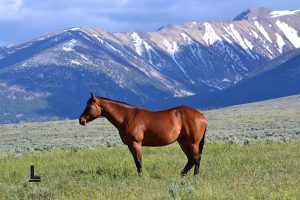Optimize Your Horse’s Booster Vaccines
For some diseases, silent shedders represent a significant source of transmission and environmental contamination.
 Outbreaks of respiratory disease at equine gatherings result in devastating consequences, including prolonged lockdowns or quarantines and hefty veterinary bills. While strict biosecurity measures are widely recommended, some viruses and bacteria that cause respiratory tract infections slip through the cracks. For some diseases, like equine herpesvirus-1 (EHV-1), subclinical—or silent—shedders represent a significant source of transmission and environmental contamination.*
Outbreaks of respiratory disease at equine gatherings result in devastating consequences, including prolonged lockdowns or quarantines and hefty veterinary bills. While strict biosecurity measures are widely recommended, some viruses and bacteria that cause respiratory tract infections slip through the cracks. For some diseases, like equine herpesvirus-1 (EHV-1), subclinical—or silent—shedders represent a significant source of transmission and environmental contamination.*
Subclinical shedders spread disease-causing organisms while showing no clinical signs of disease. To determine how frequently subclinical shedding occurs at equine events, a team of veterinarians recently collected 162 nasal secretions and 149 stall swabs during a multiday horse show in California. All horses included in the study were isolated at home for at least 28 days prior to the show.
Shedding of EHV-1 was a relatively uncommon finding. No positive nasal swabs were obtained in the study. As pointed out by the researchers, this was expected, considering all of the horses had been isolated prior to the show and commingling, a key factor in the transmission of this contagious respiratory pathogen, was largely avoided. Further, all tested horses were healthy on arrival at the show and for the duration of the show. Thus, all of the positive samples were obtained from subclinical shedders.
What wasn’t expected was that 3% of the stall swabs were positive for EHV-1. All of the positive tests were clustered in the same barn and, according to the study, “most likely reflect silent and active spread.”
“The origin of EHV-1 in the study is speculative but likely originated from a focal source and slowly spread thereafter directly via horse-to-horse contact or indirectly via contaminated equipment,” wrote the researchers. They also mentioned that EHV-1 is a hardy pathogen, capable of surviving in the environment for prolonged periods of time. In water, for example, the virus can survive for three weeks.
“Although only rarely identified in this study, EHV-1 was isolated from apparently healthy horses and from stalls in which healthy horses were being housed. Together with strict biosecurity measures, horses should be vaccinated for EHV-1 as recommended by the American Association of Equine Practitioners,” advised Kathleen Crandell, Ph.D., a nutritionist for Kentucky Equine Research.
The vaccine against EHV-1 requires frequent boosters, up to four times per year depending on the horse and competition schedule.
“Ways to maximize the horse’s response to vaccination may involve supplementing the horse’s diet with vitamin E. Natural vitamin E (d-alpha tocopherol) boosts T cell lymphocytes, an integral part of the body’s immune response. Nano-E, available from Kentucky Equine Research, is a natural-source vitamin E that has better absorption and utilization than synthetic forms of vitamin E,” shared Crandell.
*Pusterla, N., E. Sandler-Burtness, S. Barnum, L.A. Hill, E. Mendonsa, R. Khan, D. Portener, H. Ridland, and S. Schumacher. 2022. Frequency of detection of respiratory pathogens in nasal secretions from healthy sport horses attending a spring show in California. Journal of Equine Veterinary Science 117:104089.










